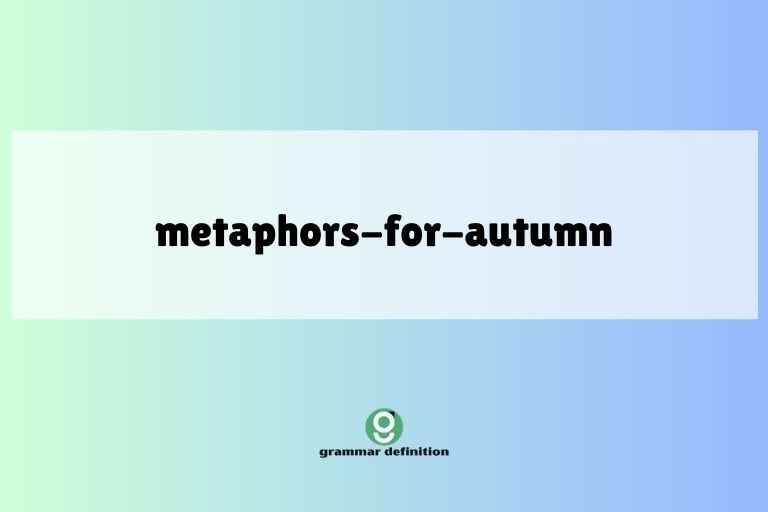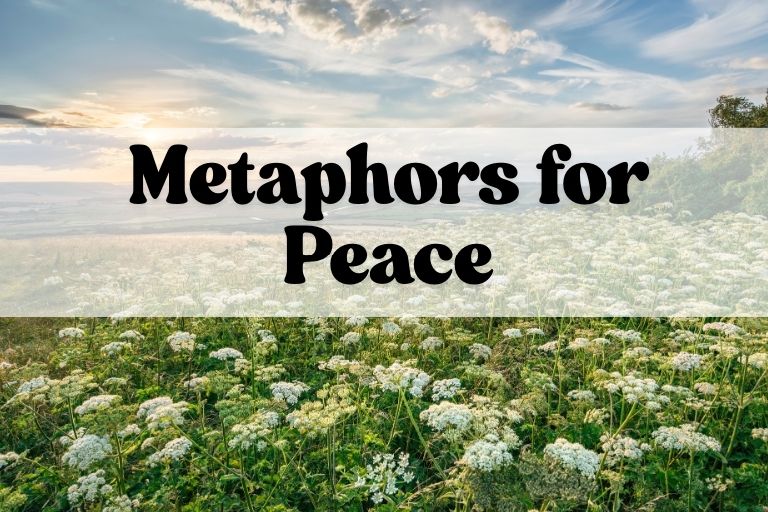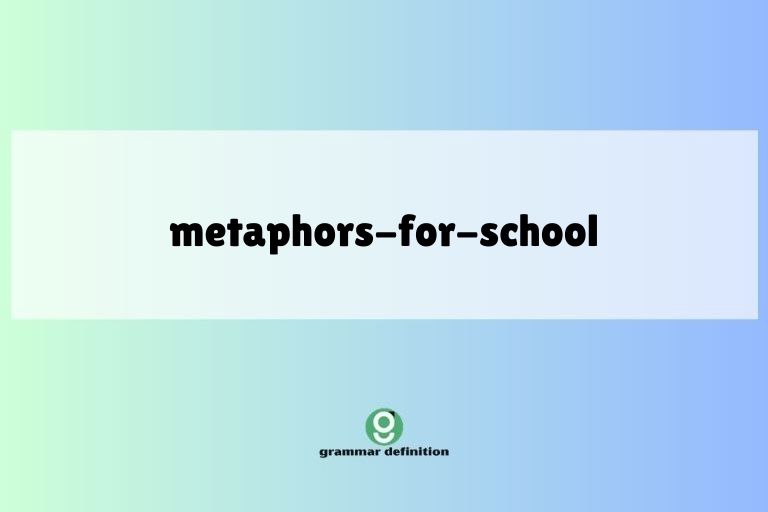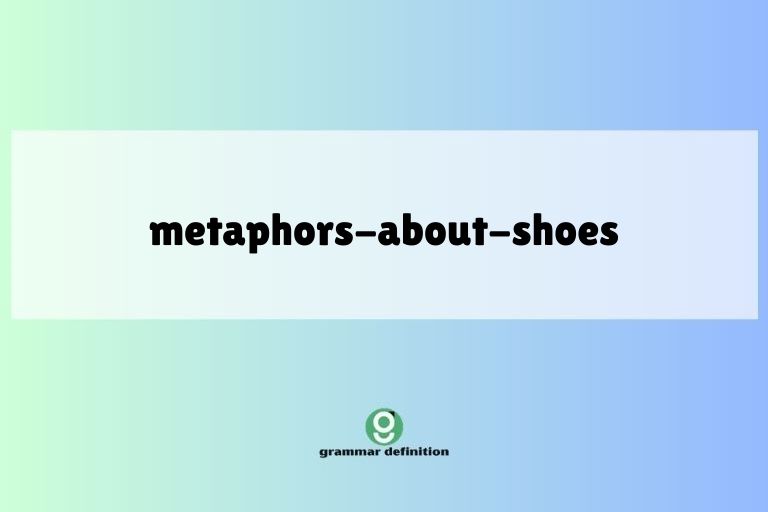Autumn’s Tongue: Mastering Metaphors for the Fall Season

Autumn, with its vibrant colors and crisp air, is a season that naturally lends itself to metaphorical expression. Understanding metaphors for autumn not only enhances our appreciation of literature and poetry but also sharpens our ability to use figurative language effectively.
This article delves into the rich tapestry of autumn metaphors, exploring their meanings, structures, and applications. Whether you’re a student, writer, or simply a lover of the English language, this guide will equip you with the knowledge and skills to master the art of metaphorical expression related to autumn.
By exploring a wide range of metaphors, analyzing their components, and providing numerous examples, this article aims to provide a comprehensive understanding of how metaphors function in describing and interpreting the fall season. Furthermore, we will examine common mistakes, provide practical exercises, and address frequently asked questions to ensure a thorough and engaging learning experience.
Table of Contents
- Definition of Metaphors for Autumn
- Structural Breakdown of Autumn Metaphors
- Types and Categories of Autumn Metaphors
- Examples of Autumn Metaphors
- Usage Rules for Autumn Metaphors
- Common Mistakes with Autumn Metaphors
- Practice Exercises
- Advanced Topics in Autumn Metaphors
- FAQ: Frequently Asked Questions
- Conclusion
Definition of Metaphors for Autumn
A metaphor is a figure of speech that directly compares two unlike things without using “like” or “as.” In the context of autumn, metaphors are used to describe the season by associating it with other concepts, ideas, or objects that share similar characteristics. These characteristics might include color, feeling, or even a stage of life.
Autumn metaphors allow us to express the essence of the season in a more vivid and imaginative way than literal descriptions.
Metaphors function by transferring qualities from one thing to another, creating a new understanding or perspective. For example, describing autumn as “the sunset of the year” implies that autumn is the final, beautiful conclusion of the year’s cycle, just as a sunset concludes the day.
This highlights the themes of decline, beauty in decay, and the anticipation of rest that are often associated with autumn.
Autumn metaphors can be found in various contexts, including literature, poetry, songs, and everyday conversation. They are often used to evoke specific emotions or to convey deeper meanings about life, change, and mortality.
Understanding these metaphors enhances our appreciation of artistic expression and improves our ability to communicate effectively.
Structural Breakdown of Autumn Metaphors
The structure of a metaphor involves two key elements: the tenor and the vehicle. The tenor is the subject being described (in this case, autumn), and the vehicle is the object or concept used to describe the tenor. The connection between the tenor and the vehicle is the shared characteristic or quality, known as the ground.
For instance, in the metaphor “Autumn is a painter,” the tenor is autumn, and the vehicle is a painter. The ground is the shared characteristic of creating beauty through color and artistry.
Understanding these components helps us analyze and interpret metaphors more effectively.
Autumn metaphors often rely on personification, giving human qualities to the season. This can involve ascribing emotions, actions, or physical characteristics to autumn, such as “Autumn whispers secrets through the trees” or “Autumn weeps with gentle rain.” This structural element adds depth and emotional resonance to the metaphor.
Types and Categories of Autumn Metaphors
Autumn metaphors can be categorized based on the aspects of autumn they emphasize. Here are some common categories:
Metaphors of Transition and Change
These metaphors focus on autumn as a period of transition from summer to winter, highlighting the changes in weather, landscape, and mood. Examples include “Autumn is the bridge between warmth and cold” or “Autumn is a turning page in the book of the year.”
Metaphors of Decay and Decline
These metaphors emphasize the themes of decay, decline, and the end of life that are often associated with autumn. Examples include “Autumn is the sunset of the year” or “Autumn is a season of rust.”
Metaphors of Beauty and Abundance
Despite the themes of decline, autumn is also a season of vibrant colors and bountiful harvests. These metaphors highlight the beauty and abundance of autumn.
Examples include “Autumn is a tapestry of gold and crimson” or “Autumn is a cornucopia of earthly delights.”
Metaphors of Reflection and Contemplation
The quiet, contemplative atmosphere of autumn often inspires reflection and introspection. These metaphors emphasize the introspective qualities of the season.
Examples include “Autumn is a time for the soul to rest” or “Autumn is a mirror reflecting on the year gone by.”
Examples of Autumn Metaphors
The following tables provide extensive examples of autumn metaphors, categorized by the themes they represent. Each example is designed to illustrate the diverse ways in which autumn can be metaphorically expressed.
Table 1: Metaphors of Transition and Change
This table illustrates metaphors that characterize autumn as a period of transition and change, highlighting the shift from summer to winter.
| Metaphor | Explanation |
|---|---|
| Autumn is the doorway to winter. | Autumn acts as an entrance into the colder months, symbolizing a shift in climate and environment. |
| Autumn is a chameleon, changing its colors daily. | Autumn’s landscape transforms rapidly, much like a chameleon’s skin. |
| Autumn is the hesitant dancer before the winter’s waltz. | Autumn is a prelude to the stillness of winter. |
| Autumn is nature’s grand finale. | Autumn represents the culminating act of nature’s yearly performance. |
| Autumn is the year’s deep breath before its slumber. | Autumn provides a period of rest before the dormancy of winter. |
| Autumn is the shedding of summer’s skin. | Autumn signifies the removal of summer’s warmth and growth. |
| Autumn is a bridge between warmth and cold. | Autumn connects the warm days of summer with the frigid days of winter. |
| Autumn is a turning page in the book of the year. | Autumn represents a significant change in the yearly narrative. |
| Autumn is the earth preparing for a long sleep. | Autumn marks the beginning of the earth’s dormant period. |
| Autumn is the whisper of winter’s approach. | Autumn foreshadows the arrival of winter’s cold and snow. |
| Autumn is a symphony of change. | The season is filled with harmonious transformations. |
| Autumn is the season of letting go. | Leaves fall, representing the act of releasing what is no longer needed. |
| Autumn is a time when nature pauses to reflect. | The natural world seems to slow down, inviting contemplation. |
| Autumn is a prelude to winter’s quietude. | It sets the stage for the stillness and peace of winter. |
| Autumn is the earth’s exhale before winter’s inhale. | It’s a release before the earth takes in the cold air of winter. |
| Autumn is a season of transformation. | The landscape undergoes significant changes in color and texture. |
| Autumn is the gateway to colder days. | It marks the beginning of the transition to winter temperatures. |
| Autumn is a blend of summer’s memory and winter’s promise. | It combines the warmth of the past with the anticipation of the future. |
| Autumn is a period of adjustment. | Living things adapt to the changing conditions. |
| Autumn is a shift in nature’s rhythm. | The pace of life in the natural world slows down. |
| Autumn is the season of goodbyes. | Nature bids farewell to the vibrancy of summer. |
| Autumn is a preparation for dormancy. | Plants and animals get ready for a period of inactivity. |
| Autumn is a time of winding down. | The energy of the year begins to diminish. |
| Autumn is a transition from growth to rest. | Nature shifts from a period of active growth to a state of rest. |
Table 2: Metaphors of Decay and Decline
This table presents metaphors that focus on the themes of decay, decline, and the ending of cycles, often associated with autumn.
| Metaphor | Explanation |
|---|---|
| Autumn is the sunset of the year. | Autumn represents the end of the year’s cycle, similar to how a sunset ends the day. |
| Autumn is a season of rust. | The changing colors of leaves resemble rust, symbolizing decay and decline. |
| Autumn is the earth’s farewell. | It represents the earth’s final act before winter’s dormancy. |
| Autumn is nature’s slow surrender. | Nature gradually relinquishes its vibrancy and warmth. |
| Autumn is the year’s dying ember. | Autumn is the last glowing remains of the year’s energy. |
| Autumn is the season of fading glory. | The vibrant colors of autumn are beautiful, but they are also fleeting. |
| Autumn is a gentle descent into darkness. | The days grow shorter, and the season moves towards the darkness of winter. |
| Autumn is a season of letting go. | Leaves fall from the trees, symbolizing the release of what is no longer needed. |
| Autumn is nature’s preparation for its final rest. | The natural world prepares for the dormant period of winter. |
| Autumn is the earth’s sigh before its slumber. | It’s a deep breath out before the earth enters a period of rest. |
| Autumn is the final act of a play. | It represents the concluding part of the year’s drama. |
| Autumn is the twilight of the year. | It’s the period of fading light before the darkness of winter. |
| Autumn is a season of endings. | It signifies the conclusion of many natural cycles. |
| Autumn is the year’s farewell embrace. | It’s a final, affectionate goodbye before winter’s arrival. |
| Autumn is the earth’s slow release of its grip on life. | Nature gradually lets go as it prepares for winter. |
| Autumn is a time of nature’s retreat. | Living things withdraw and conserve energy for the colder months. |
| Autumn is the year’s final bow. | It’s the concluding gesture before the year comes to an end. |
| Autumn is a season of decline. | The natural world diminishes as it prepares for winter. |
| Autumn is the end of the line for many plants. | Annual plants complete their life cycle and die. |
| Autumn is nature’s way of saying goodbye to summer. | It’s a farewell to the warmth and growth of the summer months. |
| Autumn is the season when life slows down. | The pace of activity in the natural world decreases. |
| Autumn is the year’s last chapter. | It represents the final part of the yearly narrative. |
| Autumn is the season when nature prepares to sleep. | Living things get ready for a period of dormancy. |
| Autumn is a period of fading beauty. | The vibrant colors of the season gradually diminish. |
Table 3: Metaphors of Beauty and Abundance
This table provides metaphors that highlight the beauty and abundance of autumn, despite its association with decline and decay.
| Metaphor | Explanation |
|---|---|
| Autumn is a tapestry of gold and crimson. | The vibrant colors of autumn leaves create a rich, woven pattern. |
| Autumn is a cornucopia of earthly delights. | Autumn offers a wealth of fruits, vegetables, and other natural treasures. |
| Autumn is nature’s masterpiece. | The season’s beauty is a work of art created by nature. |
| Autumn is a festival of colors. | The landscape is filled with a vibrant array of hues. |
| Autumn is the season of golden light. | The sunlight during autumn has a warm, golden glow. |
| Autumn is a painter with a palette of fire. | Autumn’s colors are reminiscent of flames and embers. |
| Autumn is a season of harvest. | It’s a time when crops are gathered and celebrated. |
| Autumn is a treasure chest of natural beauty. | The season is filled with valuable and delightful sights. |
| Autumn is nature’s grand spectacle. | The changing colors and falling leaves create a breathtaking display. |
| Autumn is a season of rich rewards. | It offers a bounty of fruits, vegetables, and nuts. |
| Autumn is a mosaic of vibrant hues. | The landscape is composed of many different colors. |
| Autumn is nature’s final burst of glory. | It’s the last display of beauty before winter’s arrival. |
| Autumn is a symphony of falling leaves. | The sound of leaves rustling in the wind is like music. |
| Autumn is a time of cozy abundance. | The season offers a sense of comfort and plenty. |
| Autumn is a season of nature’s bounty. | It provides a wealth of natural resources. |
| Autumn is a gallery of natural art. | The landscape is filled with beautiful scenes. |
| Autumn is a season of sweet fragrances. | The air is filled with the scents of ripe fruits and decaying leaves. |
| Autumn is a treasure trove of earthy tones. | The landscape is dominated by browns, oranges, and reds. |
| Autumn is a season of visual delight. | The changing colors and textures are pleasing to the eye. |
| Autumn is a showcase of nature’s artistry. | The season demonstrates the skill and creativity of the natural world. |
| Autumn is a season of colorful transformation. | The landscape undergoes a dramatic change in appearance. |
| Autumn is a period of rich sensory experiences. | The season offers a variety of sights, sounds, and smells. |
| Autumn is a celebration of nature’s gifts. | It’s a time to appreciate the abundance of the natural world. |
| Autumn is a season of vibrant decay. | The beauty of the season is heightened by the knowledge that it is fleeting. |
Table 4: Metaphors of Reflection and Contemplation
This table showcases metaphors that emphasize the introspective qualities of autumn, inspiring reflection and contemplation.
| Metaphor | Explanation |
|---|---|
| Autumn is a time for the soul to rest. | The quiet atmosphere of autumn encourages introspection and relaxation. |
| Autumn is a mirror reflecting on the year gone by. | The season provides an opportunity to reflect on past experiences and lessons. |
| Autumn is a season of quiet contemplation. | The slower pace of life encourages thoughtful reflection. |
| Autumn is a time for inward journeys. | The season invites introspection and self-discovery. |
| Autumn is a period of thoughtful reflection. | The changing colors and falling leaves prompt contemplation. |
| Autumn is a season of gentle introspection. | The quiet atmosphere fosters a sense of inner peace and reflection. |
| Autumn is a time for the soul to gather its strength. | The season provides an opportunity to recharge and prepare for the winter. |
| Autumn is a mirror reflecting our inner selves. | The season encourages us to examine our thoughts and feelings. |
| Autumn is a season of quiet wisdom. | The natural world seems to offer insights and lessons. |
| Autumn is a time for the mind to wander. | The season encourages daydreaming and creative thinking. |
| Autumn is a period of reflective stillness. | The quiet atmosphere promotes a sense of inner calm. |
| Autumn is a season of inner exploration. | The changing colors and falling leaves invite introspection. |
| Autumn is a time for the heart to find peace. | The season offers a sense of comfort and serenity. |
| Autumn is a mirror reflecting life’s beauty and fragility. | It reminds us of the preciousness and fleeting nature of existence. |
| Autumn is a season of thoughtful awareness. | It encourages us to be more mindful of our surroundings and ourselves. |
| Autumn is a time for the spirit to renew itself. | The season offers an opportunity to refresh and rejuvenate. |
| Autumn is a mirror reflecting the cycle of life. | It reminds us of the natural progression from birth to death. |
| Autumn is a season of introspective calm. | The quiet atmosphere fosters a sense of inner peace. |
| Autumn is a time for the soul to find solace. | The season offers comfort and support. |
| Autumn is a mirror reflecting our hopes and fears. | The season encourages us to confront our deepest emotions. |
| Autumn is a season of quiet understanding. | The natural world seems to offer insights and lessons. |
| Autumn is a time for the mind to find clarity. | The season encourages focus and clear thinking. |
| Autumn is a period of reflective quietude. | The peaceful atmosphere promotes a sense of inner calm. |
| Autumn is a season of self-discovery. | The changing colors and falling leaves invite introspection. |
Usage Rules for Autumn Metaphors
Using autumn metaphors effectively requires attention to several key rules:
- Clarity: Ensure the metaphor is clear and understandable. The connection between the tenor (autumn) and the vehicle should be evident.
- Relevance: The vehicle should be relevant to the context and convey the intended meaning.
- Originality: Strive for originality to make your writing more engaging and memorable. Avoid clichés whenever possible.
- Consistency: Maintain consistency in your metaphorical language. Avoid mixing metaphors that create conflicting images.
- Appropriateness: Use metaphors that are appropriate for your audience and the overall tone of your writing.
For example, instead of saying “Autumn is sad” (which is a bland statement), you could say “Autumn is a melancholic melody played on the wind,” which is more evocative and specific.
Common Mistakes with Autumn Metaphors
Several common mistakes can weaken the impact of autumn metaphors. Here are some examples:
- Clichés: Overusing common metaphors like “Autumn is beautiful” or “Autumn is colorful” can make your writing seem uninspired.
- Mixed Metaphors: Mixing metaphors that create conflicting images can confuse the reader. For example, “Autumn is a sunset sailing on a sea of leaves” combines incompatible images.
- Lack of Clarity: Using metaphors that are too abstract or obscure can leave the reader confused. The connection between the tenor and vehicle should be clear.
- Inconsistency: Shifting between different metaphorical frameworks can disrupt the flow of your writing.
Here are some examples of incorrect and corrected metaphors:
| Incorrect Metaphor | Corrected Metaphor | Explanation |
|---|---|---|
| Autumn is a colorful time. | Autumn is a kaleidoscope of vibrant hues. | The corrected metaphor is more vivid and specific. |
| Autumn is like a sad song. | Autumn is a somber ballad sung by the wind. | The corrected metaphor is more evocative and descriptive. |
| Autumn is a sunset sailing on a sea of leaves. | Autumn is a sunset painting the leaves with fire. | The corrected metaphor avoids mixing incompatible images. |
Practice Exercises
Test your understanding of autumn metaphors with these practice exercises.
Exercise 1: Identifying Metaphors
Identify the metaphor in each sentence and explain its meaning.
| Question | Answer |
|---|---|
| 1. Autumn is the earth’s final curtain call. | Metaphor: Autumn is the earth’s final curtain call. Meaning: Autumn is the concluding performance of the year. |
| 2. The leaves are nature’s confetti. | Metaphor: The leaves are nature’s confetti. Meaning: The falling leaves are like celebratory confetti. |
| 3. Autumn is a symphony of rustling sounds. | Metaphor: Autumn is a symphony of rustling sounds. Meaning: The sounds of autumn are harmonious and musical. |
| 4. The wind is autumn’s mournful cry. | Metaphor: The wind is autumn’s mournful cry. Meaning: The wind sounds like a sad lament. |
| 5. Autumn is a book of golden memories. | Metaphor: Autumn is a book of golden memories. Meaning: Autumn is a time for remembering pleasant experiences. |
| 6. The forest is autumn’s vibrant painting. | Metaphor: The forest is autumn’s vibrant painting. Meaning: The autumn forest is a colorful and artistic scene. |
| 7. Autumn is a season of whispered secrets. | Metaphor: Autumn is a season of whispered secrets. Meaning: The season holds a sense of mystery and hidden knowledge. |
| 8. The falling leaves are autumn’s tears. | Metaphor: The falling leaves are autumn’s tears. Meaning: The falling leaves symbolize sadness or loss. |
| 9. Autumn is a quiet retreat for the soul. | Metaphor: Autumn is a quiet retreat for the soul. Meaning: Autumn offers a peaceful and restorative experience. |
| 10. Autumn is the year’s gentle lullaby. | Metaphor: Autumn is the year’s gentle lullaby. Meaning: Autumn is a soothing and calming season. |
Exercise 2: Creating Metaphors
Create a metaphor for autumn based on the given theme.
| Theme | Your Metaphor |
|---|---|
| Change | Autumn is a revolving door between seasons. |
| Beauty | Autumn is a canvas splashed with fiery hues. |
| Decline | Autumn is the slow fade of summer’s song. |
| Reflection | Autumn is a mirror showing the past year’s face. |
| Harvest | Autumn is a treasure chest overflowing with nature’s gold. |
| Wind | The wind is autumn’s restless breath. |
| Leaves | The leaves are nature’s fleeting jewels. |
| Sky | The autumn sky is a fading dream. |
| Rain | The autumn rain is the earth’s gentle weeping. |
| Trees | The trees are autumn’s skeletal fingers reaching for the sky. |
Exercise 3: Correcting Mistakes
Identify and correct the mistakes in the following metaphors.
| Incorrect Metaphor | Corrected Metaphor | Explanation |
|---|---|---|
| Autumn is like a colorful time. | Autumn is a vibrant mosaic of colors. | The corrected metaphor is more specific and engaging. |
| Autumn is sad and happy. | Autumn is a bittersweet symphony of emotions. | The corrected metaphor is more nuanced and evocative. |
| Autumn is a sunset sailing on a leaf. | Autumn is a sunset painting the leaves with gold. | The corrected metaphor avoids mixing incompatible images. |
| Autumn is like the end. | Autumn is the final chapter of the year’s story. | The corrected metaphor is more descriptive and meaningful. |
| Autumn is a fast slow season. | Autumn is a season of deliberate decline. | The corrected metaphor avoids contradictory terms. |
| Autumn is a beautiful thing. | Autumn is a breathtaking spectacle of nature’s artistry. | The corrected metaphor is more vivid and descriptive. |
| Autumn is a colorful and sad time. | Autumn is a poignant tapestry of vibrant decay. | The corrected metaphor is more nuanced and evocative. |
| Autumn is a quick season. | Autumn is a fleeting moment of golden beauty. | The corrected metaphor is more specific and engaging. |
| Autumn is like a colorful end. | Autumn is a vibrant farewell to summer’s warmth. | The corrected metaphor is more descriptive and meaningful. |
| Autumn is a happy and sad time. | Autumn is a bittersweet blend of joy and melancholy. | The corrected metaphor is more nuanced and evocative. |
Advanced Topics in Autumn Metaphors
For advanced learners, exploring the cultural and historical contexts of autumn metaphors can provide deeper insights. Different cultures may associate different meanings and symbols with autumn, influencing the types of metaphors they use.
For example, in some cultures, autumn is primarily associated with harvest and abundance, while in others, it is more closely linked to themes of death and mourning.
Another advanced topic is the use of extended metaphors, where a single metaphor is developed and sustained throughout a longer piece of writing. This can create a powerful and cohesive effect, but it requires careful planning and execution to avoid becoming repetitive or strained.
Consider exploring the works of poets and writers who are known for their use of autumn metaphors, such as John Keats, Robert Frost, and Emily Dickinson. Analyzing their techniques can provide valuable lessons in crafting effective and evocative metaphors.
FAQ: Frequently Asked Questions
- What is the difference between a metaphor and a simile?
A metaphor directly compares two unlike things without using “like” or “as,” while a simile uses “like” or “as” to make the comparison. For example, “Autumn is a sunset” (metaphor) vs. “Autumn is like a sunset” (simile).
- How can I avoid using clichés in my autumn metaphors?
Strive for originality by focusing on specific details and sensory experiences. Think about what makes autumn unique and try to capture those qualities in your metaphors. Use fresh, unexpected comparisons.
- What are some common themes in autumn metaphors?
Common themes include transition, change, decay, decline, beauty, abundance, reflection, and contemplation. These themes reflect the various aspects of autumn and its associated emotions.
- How can I make my autumn metaphors more vivid?
Use sensory language to appeal to the reader’s senses. Describe the colors, sounds, smells, and textures of autumn in your metaphors. This will make your writing more engaging and memorable.
- Can I use personification in autumn metaphors?
Yes, personification is a common and effective technique in autumn metaphors. Giving human qualities to autumn can add depth and emotional resonance to your writing. For example, “Autumn whispers secrets through the trees.”
- How do cultural perspectives influence autumn metaphors?
Cultural backgrounds shape the associations and symbols linked to autumn. Some cultures emphasize harvest and abundance, leading to metaphors reflecting prosperity. Others focus on decline and remembrance, resulting in metaphors highlighting loss and reflection. These cultural nuances enrich the variety and depth of autumn metaphors.
- What are some examples of extended autumn metaphors in literature?
In literature, an extended metaphor is developed throughout the entire piece, using autumn as a central theme to explore broader ideas. For example, in some poems, autumn represents aging and the acceptance of life’s final stages, with each stanza elaborating on this metaphor through vivid imagery and symbolism.
- How can metaphors enhance the emotional impact of writing about autumn?
Metaphors can create an emotional connection by evoking feelings associated with autumn, such as nostalgia, peace, or melancholy. By comparing autumn to emotionally charged concepts, writers can deepen the reader’s understanding and engagement with the season’s significance.
Conclusion
Mastering metaphors for autumn is a valuable skill that enhances our ability to express ourselves creatively and appreciate the beauty of language. By understanding the structure, types, and usage rules of autumn metaphors, we can craft vivid and evocative descriptions that capture the essence of the season.
Remember to avoid common mistakes, practice regularly, and explore advanced topics to deepen your understanding.
As you continue to explore the world of autumn metaphors, remember that the key is to observe, reflect, and experiment. Pay attention to the details of the season, consider the emotions it evokes, and don’t be afraid to try new and original comparisons.
With practice, you’ll be able to use autumn metaphors to enrich your writing and express your unique perspective on this beautiful and evocative season.






